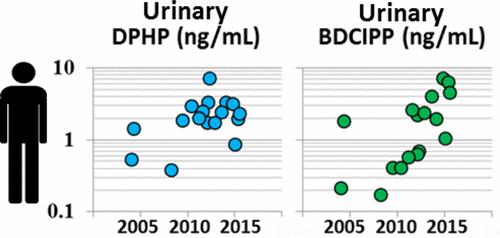Credit: American Chemical Society
Out of concern that flame retardants - polybrominated diphenyl ethers (PBDEs) - cause health problems, the U.S. government worked with manufacturers to start phasing them out in 2004. But evidence has been building that PBDE replacements, including organophosphate flame retardants, are in the environment and in our bodies. Now researchers report in ACS' journal Environmental Science & Technology Letters that exposure to at least one of the newer compounds has increased significantly over the past decade.
Through multiple studies over the past five years, Heather M. Stapleton and colleagues have found that organophosphates are among the most commonly detected flame retardants in furniture and electronics. The compounds are also used in many other products such as plastics and nail polish. Like their predecessors that are being phased out, organophosphates aren't bound to products and can migrate out and accumulate in indoor air and in dust, on floors and on other surfaces. They can then get ingested, inhaled or even potentially absorbed through the skin. Stapleton's lab has documented through several studies that the metabolites of organophosphate flame retardants are frequently showing up in urine. But these were all snapshots in time. To determine if there were any trends in exposure over several years, the researchers compiled the data from 14 of these studies that collected data between 2002 and 2015.
The researchers found that a metabolite of one commonly used organophosphate flame retardant, tris(1,3-dichloro-2-propyl) phosphate (TDCIPP), occurred at levels 15 times higher in 2014-2015 samples than in samples from 2002-2003. The analysis also suggested that exposure increases in the summer. The researchers say further research is needed to determine whether these levels are related to health problems.
More information: Temporal Trends in Exposure to Organophosphate Flame Retardants in the United States, Environ. Sci. Technol. Lett., Article ASAP. DOI: 10.1021/acs.estlett.6b00475
Journal information: Environmental Science & Technology Letters
Provided by American Chemical Society






















